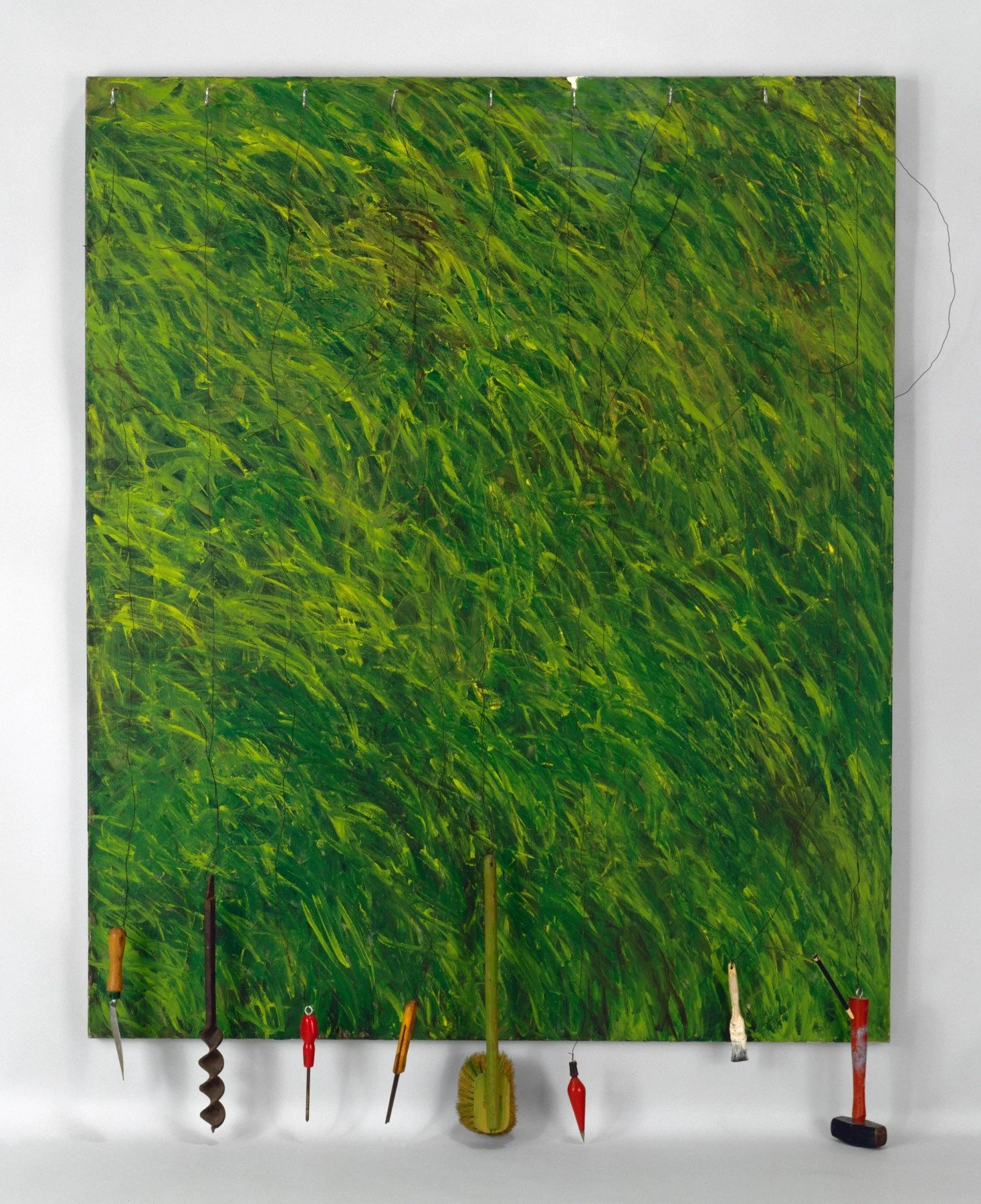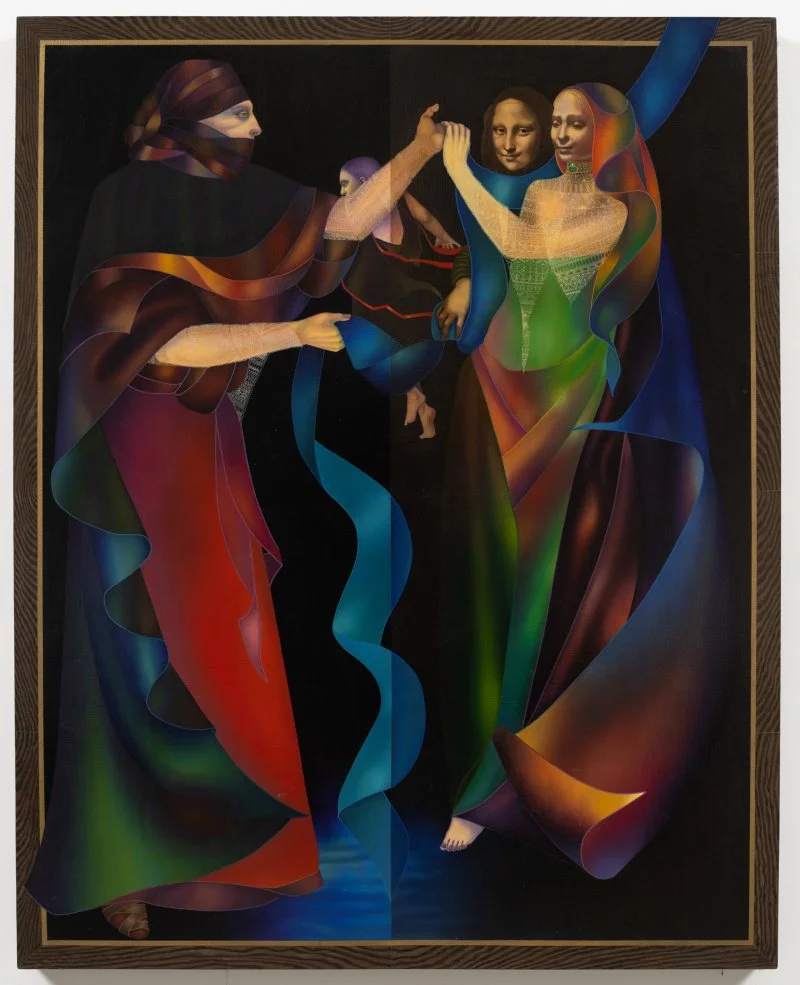Jim Dine
“THE ’60S”
New York, 395 Broadway
The exhibition begins with Dine’s seminal painting Car Crash (1959-60), which shares a title with the Happening that he produced in 1960 at the Reuben Gallery in New York. A tenebrous, heavily worked surface of black pigment on burlap radiates with somber intensity, memorializing two car accidents the artist experienced in quick succession during the summer of 1959—pivotal and traumatic events that would shadow his work during this period. The shape of a crudely scrawled cross, which would become a motif in Dine’s iconography, repeats across the painting’s surface. Halfway between gesture and symbol, the cross recurs in other works from this series, suggesting at once a roadside memorial and a universal symbol of succor.
This sense of duality cuts across the works in the exhibition. The daily accoutrement of the artist’s studio as well as mementos of Dine’s childhood spent between the aisles of his grandfather’s hardware store—hammers, boots, palettes, color charts, and so on—exude a sense of transfiguration. Often blurring the lines between painting and sculpture, Dine’s depictions of these ordinary implements marry illusion and reality.
In Dine’s paintings, expressionist intensity collides with deadpan literalism. In The Studio (Landscape Painting) (1963), Dine meditates on the nature of representation, juxtaposing a literal “still life” of found objects with a pictorial montage of abstract expressionist idioms, offering wry commentary on the history of medium and its relationship to lived reality. Things in Their Natural Setting (First Version) (1973), made a decade later, conveys an equally arch sensibility. An all-over field of abstract and gestural brushwork in shades of green becomes a “support” for real tools—screwdrivers, a mallet, a brush, a trowel—which are physically affixed to the painting’s surface by wires and dangle freely off the bottom of the canvas. The lighthearted yet dead-serious play between truth and illusion, objecthood and materiality embody tensions that exist at the heart of the artist’s practice.






